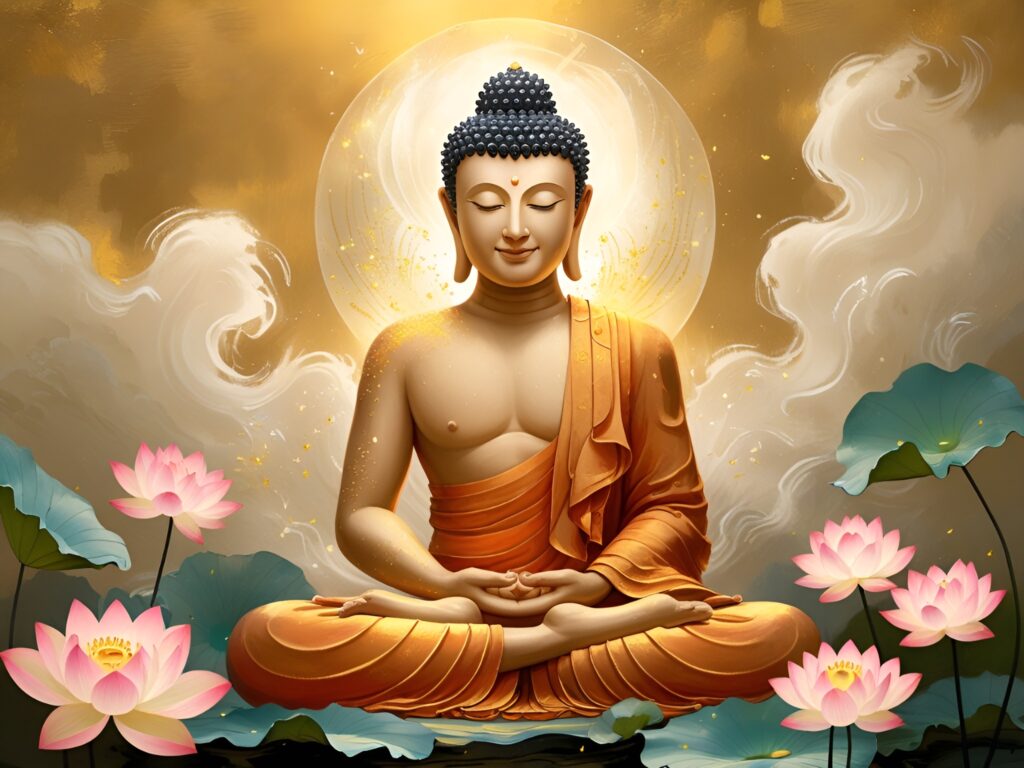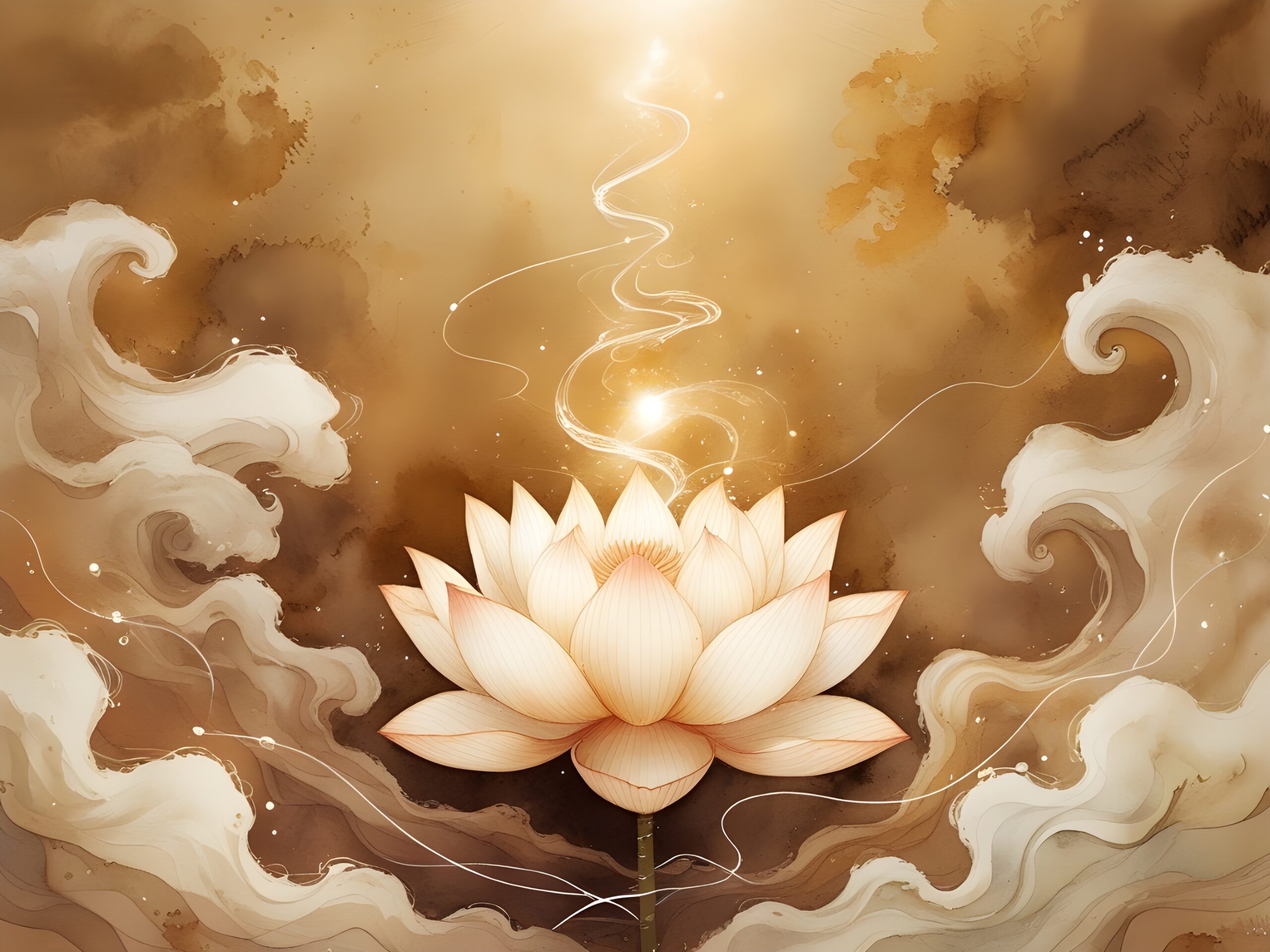According to Buddhist philosophy, existence is comprised solely of Nama-Rupa (mind and matter) and the supreme state of Nirvana. In this article, we will focus on Rupa (matter). Rupa refers to the smallest units of energy from which everything in this world is constructed. These units always exist in clusters. The Buddha taught that although there are numerous Rupas, 28 are sufficient for ordinary people (Puthujjana) to understand and realize everything, including Nirvana. Rupas always exist in clusters, ranging from a minimum of eight to a maximum of thirteen, forming the world.

Among these, eight special Rupas, known as the Shuddha Ashtaka (Pure Octad), are invariably present in any Rupa cluster. They are:
- Pathavi (Earth Element): The qualities of heaviness/lightness, coarseness/fineness, and hardness/softness.
- Apo (Water Element): The qualities of cohesion/dispersion.
- Tejo (Fire Element): The qualities of heat/cold.
- Vayo (Air Element): The qualities of motion/stillness.
- Varna (Color): The forms we see due to visible light.
- Gandha (Odor): The pleasant/unpleasant smells we perceive due to air.
- Rasa (Taste): The sweet/sour/salty/bitter/umami tastes we experience due to taste buds on the tongue.
- Oja (Nutritive Essence): The life-sustaining energy, such as the energy our physical body receives from food.
Another set of Rupas exists as Prasada (Sensitive Faculties). These are subtle entities associated with the eye (Chakshu), ear (Srota), nose (Ghana), tongue (Jivha), body (Kaya), and heart (Hridaya), enabling beings to perceive sensations from the external world. These are Chakshu Prasada, Srota Prasada, Ghana Prasada, Jivha Prasada, Kaya Prasada, and Vasthu Prasada.
Two Rupas exist as Bhava (Sex Faculties), representing gender: female (Stri Bhava) and male (Purusha Bhava).
The eighteen Rupas discussed above are referred to as Nishpanna Rupas (Produced Rupas). Nishpanna Rupas are so named because they are generated directly by causal conditions such as karma.
Another category of Rupas, known as Anishpanna Rupas (Unproduced Rupas), does not arise directly from causal conditions such as karma.
Vitti Rupas (Indicating Rupas) consist of:
- Kaya Vinnatti (Bodily Intimation): The movement of air to control bodily movements like rising and falling.
- Vachi Vinnatti (Verbal Intimation): The force that directs sound to form desired letters and words during speech.
Lahutadi Rupas (Lightness, etc.) always exist together and include:
- Lahuta (Lightness)
- Muduta (Softness)
- Kammannata (Workability)
Lakshana Rupas (Characteristics Rupas) consists of:
- Upachaya (Accumulation)
- Santati (Continuity)
- Jarata (Decay)
- Aniccatā (Impermanence)
- Ākāsa dhātu (Space Element)
In future articles, we will discuss these Rupas and the specifically mentioned Rupa clusters in greater detail.
බෞද්ධ දර්ශනයට අනුව මෙලොව පවතින්නේ නාමරූප සහ උතුම් නිර්වාණය පමණි. නාම රූප නම් නාම සහ රූප වේ. අප මෙම ලිපියෙන් රූප පිලිබඳව ගෙනහැර දක්වන්නෙමු. රූප නම් මෙලොව සෑම දෙයක්ම සෑදී ඇති කුඩාම ශක්ති පින්ඩයයි. ඒවා සෑමවිටම කලාප වශයෙන් පවතී.
බුදුන් වහන්සේ දේශනා කර ඇත්තේ රූප බොහෝ ප්රමානයක් තිබුනද, නිර්වාණය සාක්ෂාත් කිරීමට සහ සියල්ල අවබෝද කර ගැනීමට රූප 28ක් පමණක් පෘතග්ජන අපට සෑහෙන බවයි. සෑමවිටම රූප කලාප වශයෙන් පවතී. අවමය අටක්ද, උපරිමය දහතුනක්ද වශයෙන් මේවාගෙන් ලෝකය සෑදී පවතී.
මෙහි ප්රධාන වශයෙන් ශුද්ධ අෂ්ඨක ලෙස විශේෂ රූප අටක් පවතී. ඒවා අනිවාර්යෙන් රූප කලාපයක පවතී. ඒවා නම් පඨවි(බර/සැහැල්ලු, ගොරෝසු/සියුමැලි, තද/මෘදු ගතිය) , අපෝ (කැටිවෙන/විසිරෙන ගතිය), තේජෝ(උණුසුම/සීතල ගතිය), වායෝ(චන්චල/නිශ්චල ගතිය), වර්ණ(දෘෂ්ය අලෝකය නිසා අපට පෙනෙන රූප) , ගන්ද(වාතය ඇති නිසා අපට දැනෙන මිහිරි අමිහිරි සුවඳ), රස (දිවෙහි රස අංකුර නිසා ඇතිවන පැණි/ඇඹුල්/ලුණු/තිත්ත/මයාමි රස), ඕජා(ජීව ගුණය , උදාහරණයක් ලෙස අප ගන්නා ආහාර වලින් රූප කයට ලැබෙන ශක්තිය) වේ.
තවත් රූප කොටසක් ප්රසාද ලෙස පවතී. ඒවා නම් බාහිර ලෝකයෙන් එන සඤ්ඥා අවබෝද කරගැනීමට සත්ත්වයාට ඇස(චක්ෂු),කන(ස්රෝත),නාසය(ඝාන),දිව(ජිව්හා),ශරීරය(කාය),හදවත(හෘදය)ආශ්රිතව පිහිටා ඇති සියුම් දෙයකි.ඒවා නම් චක්ෂු, ස්රෝත, ඝාන, ජිව්හා, කාය, වස්තු ප්රසාද නම් හයයි.
තවත් සත්ත්වයා භාව ආකාරයෙන් ඇති රූප දෙකක් ස්ත්රී, පුරුෂ භාව ලෙස පවතී.
ශබ්දය (රූප කලාප දෙකක් හෝ කිහිපයක් ඝෂ්ණයෙන් නිපදවෙන රූපය), ජීවිත රූපය (කර්මයෙන් හටගන්නා රූපයන්ගේ ජීවන ශක්තිය හෙවත් කර්මජ රූපයන් පාලනය කරන ඒවායේ පරම්පරාව පවත්වන රූපය). ඉහත අප කතා කල රූප දහඅට නිෂ්පන්න රූප ලෙස සඳහන් වේ. නිෂ්පන්න රූප නම් කර්මාදී ප්රත්යයෙන්ම උපදවනු ලබන බැවින් එසේ හඳුන්වයි.
තවත් රූප කොට්ඨාශයක් ඇත.මේවා අනිෂ්පන්න රූප ලෙස හඳුන්වා ඇත, එනම් කෙලින්ම කර්මාදී ප්රත්යන්ගෙන් හටනොගන්නා රූපයි.
විත්ති රූප ලෙස කාය ව්ඤ්ඤත්ති(ශරීරාවයව වලට අවශ්ය පරිදි වායු වේගය මෙහෙයවමින් ඉහළ යෑම්, පහළට යෑම් ආදිය ක්රියාවට වුවමනා පරිදි සිදු වීම) , වචී ව්ඤ්ඤත්ති(කථා කිරීමට උත්සාහ කිරීමේදී වුවමනා අකුරු වුවමනා වචන සෑදෙන පරිදි ශබ්දය මෙහෙයවන බල විශේෂය)ද ලහුතාදී රූප ලෙස(මේවත් සැමවිට එකටම පවතී) ලහුතා(සැහැල්ලු බව), මුදුතා(මෘදු බව),කම්මඤ්ඤතා(කර්මණ්ය බව), ලක්ෂණ රූප ලෙස උපචය (එක් රැස් වීම), සන්තති ( බොහෝ රූප එකවිට එක්රැස් වීම) ජරතා (ක්ෂය වීම, දිරීම), අනිච්චතා (විනාශ වීම), ආකාශ ධාතුව යන රූප දහයක් පවතී. මේ රූප හා විශේෂයෙන් සඳහන් කර ඇති රූප කලාප ගැන වැඩි විස්තර සහිතව ඉදිරි ලිපි වලින් අප සාකච්ඡා කරමු.


Leave a Reply